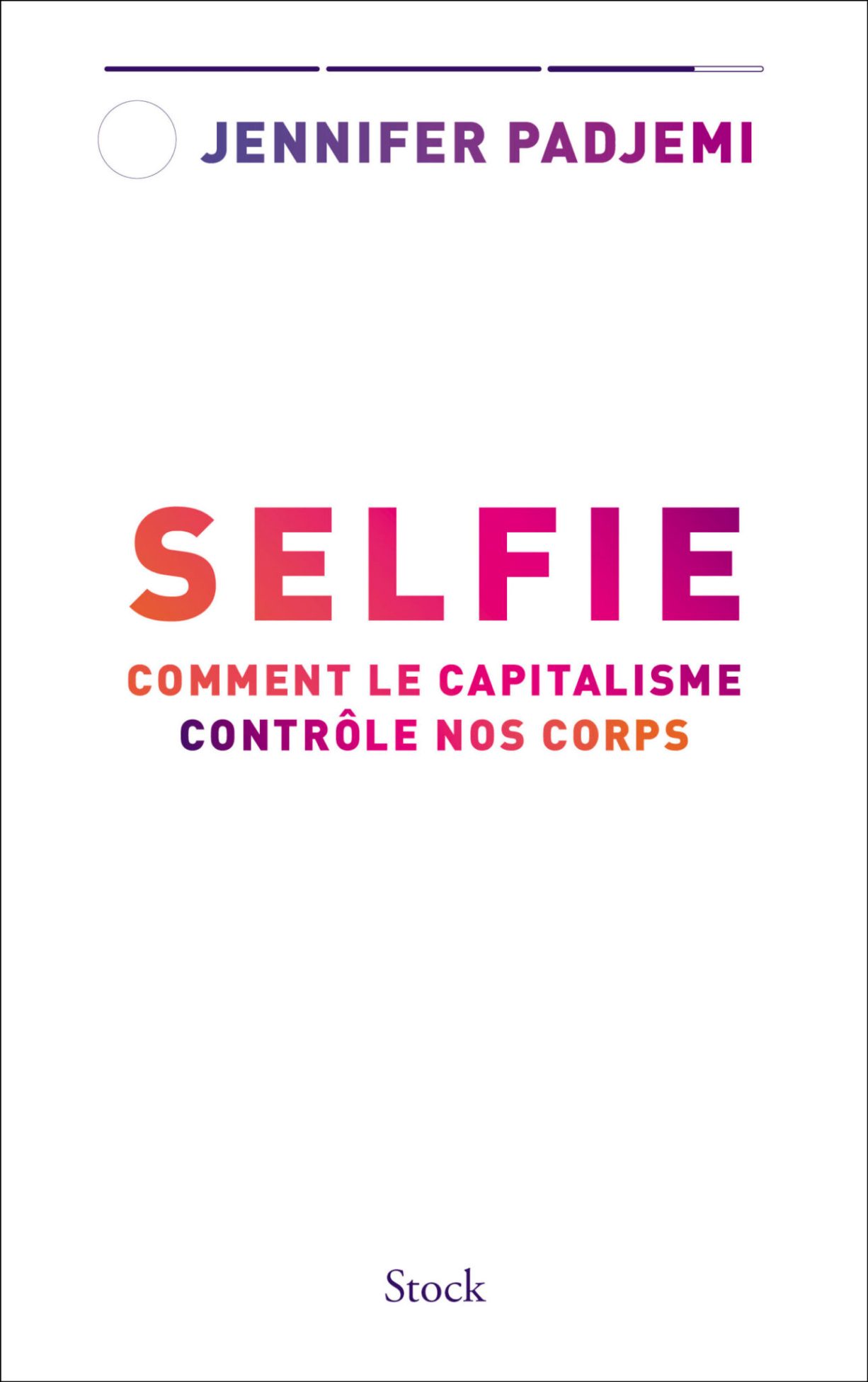To miss. In your book you outline two archetypes of contemporary femininity: the “natural” woman, thin and often white, and the hyperfeminine, made-up and often racialized woman. We just experienced an inspiring example of this categorization with Polish influencer, bodyshamed by a daily columnist. I’m curious to have your analysis of this sequence?
Jennifer Padjemi. I found this column awful. There was something very childish and classist about it. These two very exacerbated types of femininity are an invitation to choose conformity. On Polska, it was the little parisianism around a table, which comes to make fun of a person who has decided to go to demonstrate. And what do they do? I discovered this with a disdain that exacerbates everything women experience on a daily basis. To be socially valued, you have to deny a form of femininity. We are told: “get rid of the oversexualized attributes because it is always for the male gaze”. But it is also an invitation to step aside. It annoys that Polska is visible in this mass of protesters. The same person with the most discreet femininity would not have undergone this treatment.
Meanwhile, in the United States, Gwyneth Paltrow made headlines with a filmed trial. I have the impression that you have been treated with a certain kindness. The media scrutinized her looks, she made the show!
Yes, the treatment was super positive. With this process, which felt like a series, we saw her return to the stage front as an actress and no longer as a Goop guru. He knew what he was doing : he took advantage of the media coverage of the trial to make faces, to express himself in a certain way. There was an interesting media reception, because even if it doesn’t make everyone agree, it remains consensual. She has a way of presenting herself to the world that falls within all the acceptable codes of western femininity, unlike Polska.
One of the big questions posed by your essay is how did we go from an intersectional feminist revolution, centered on the liberation of all female bodies, to new aesthetic injunctions?
This revolution was started as early as the 1960s by radical feminists and the feminists of later generations, who came up with concepts to help free us from patriarchy. Then, at the turn of the 2010s, there has been a revival of narration by the first interested parties, through blogs and social networks. We have seen feminists and influencers emerge who have proposed new ways of telling the story of the body. Series like Girls also played a role. And then, after that came the capitalist upswing.
Brands have started to change their discourse and their representations in a visible but also artificial way. These businesses are run by the same people as before, often men, who want to make a profit. The more we highlight our flaws and complexes, the more companies offer us new injunctions. We delete one, but create another. And then came the lockdown. My book would have been different were it not for the pandemic. It’s really magnified everything in the way we consume, see ourselves, represent ourselves, and use so-called empowerment discourses. Our lives have become one body in a global environment.
In your analysis of the wellness industry, highlight the concept of “toxic positivity.” Wasn’t it exacerbated by confinement?
Yes but this trend emerged with the Body Positive movement. In theory, that’s great, but by forcing ourselves to love our bodies and how we look all the time, we’re kept in an order where if we don’t, it’s your fault. Gold, we are in a fluctuate, of our bodies, of our moods, of life! There’s always this idea that if something’s wrong, you can change it, and how? Buying something. Either you are the product or you are the consumer.
Many have created personal development accounts on Instagram, with these inspirational quotes about meditation, yoga, mindfulness… It may have helped some people, but all this tendency to present oneself super positive on social networks amplifies a disconnect with real life. We are never truly natural, we end up in an episode of black mirror (laughs)! And in the end, we no longer really know who we are and how we feel.
You make a rather gloomy assessment of the Body Positive movement, which you describe as a “swindle” taken over by capitalism. How did we arrive at such a catastrophic balance sheet?
It must be understood this movement is the result of the hard work of activists, such as Bold Politics. It was launched by people perceived as fat and discriminated against daily, in their love or professional life, because of their bodies. People who are denied the same humanity as others. But in recent years, the Body Positive movement was picked up by uninvolved peoplein the “I have a few extra pounds” or “I’m bloated today” mode. We have gone from a discourse against gross phobia to a discourse against complexes. Everyone has complexes, even men, but not everyone is discriminated against for this. The nuance is there. And the brands make up for it of course.
In line with the pink tax, you are developing the concept of “afrotax”. Can you explain to us what it is?
It’s an American concept that means you pay more when you go to the hairdresser, if your hair isn’t normal. I understand that in a French context, it is everywhere. Black women pay more for their shampoo, hair salon, but also spend more time taking care of their beauty in general. Nothing is done for us.
At Monoprix, products adapted to our hair are finally available, but they cost up to €20 more than the others. Do you find it normal? Why do we always have to pay more, sometimes for products that are toxic or sold in tiny packages? This price of beauty is also played out in the time spent searching for reliable information.
We spend money hoping to get as close as possible to a physically impossible standard: whiteness. The idea is to never point fingers at people because they are subject to these injunctions. The company says so “If you are clearer, you will be accepted better”. That means lightening your skin, smoothing your hair, keeping a slim shape, or absolutely wanting to match how you’re supposed to look.
All of this comes at a financial, medical and mental cost. Years later, some people end up with cancer, fibroids, or find it difficult to have a child. And nobody talks about it, because it doesn’t concern the majority of women in France. Global regulation is neededstop offering toxic products and do prevention.
You also speak in your book of another capitalist and white recovery, that of self-care, which is eminently political in origin, when it concerns minorities.
Yes, that’s the way it is, every time, to take something that interests the white majority. “Oh, this concept sounds good, it speaks to me at a certain point in my life, I take what interests me, the rest doesn’t, and I capitalize on it”. Capitalism infuses everything, even philosophical ideas like taking care of yourself. It’s a bit like hoping to buy time, because we live in a society where everyone is exhausted! But for people who are minorities, it’s just essential. It’s hard to love yourself in a society that constantly reminds you of your identity. Audrey Lorde’s thought develops the fact of taking care of oneself, to better face the hostility of society.
In your book you analyze how Instagram and TikTok have taken over our bodies. Do influencers today have the same responsibility as women’s media?
This system existed before them, but influencers undeniably bear some responsibility. I think that each feeds off of the other and that influencing should be considered a profession in its own right. Some content creators know how to edit a video, write, film, present in front of a camera… On the one hand, we have to stop denigrating them just because they are women and who talk about topics considered superficial, but on the other hand we must be able to question this way of selling us anything. There are scams, promotion of miraculous products such as slimming herbal teas etc…
You must be honest and transparent with your community. A law has just been passed to increase transparency regarding paid partnerships and to ban the promotion of surgeries, etc. They have very young subscribers who love them, as we did celebrities when we were young. But today they give the impression of being your friend, while Jennifer Aniston, in our time, we knew that she was not our friend (laughs)!
Let’s go back to the title of your book. Big trend of the 2010s, the selfie is criticized by the elites, seen as a vulgar practice. The Cannes Film Festival banned her from the red carpet. So, the selfie, angel or demon?
A little bit of both. With this book I freed myself from a form of superficiality that is frowned upon in intellectual circles. If I want to take a selfie because I love light and I think I’m amazing in that precise moment, I do it! There is a phenomenon of the order of inversion of the stigmatawith this idea of taking back something that has been so denigrated and turning it into a selling point.
Where the devil can become is that we believe he’s doing it for us, but society pushes us to please. The personalities on Instagram will propose a certain aesthetic, they will multiply the photos… You have to think about why and how you do it. When a person takes a series of selfies and only talks through filters, I tell myself that they don’t necessarily look good. We arrive at the gates of dysmorphism. So the selfie can be something powerful for the person who takes it, but also the reflection of a feeling of unease.
For me, the word “selfie” also invites you to look at yourself, in a form of benevolent self-criticism. Let’s go back to this idea of self-care: “know thyself.” Socrates was already talking about well-being. Taking care of yourself means taking a philosophical interest in who I am, who I want to be, how I want to fit into society collectively.
The individual goes towards the collective. If everyone does this, something very strong will happen. We will no longer need to evaluate each other. We will know who we are and we can fight better together.

Source: Madmoizelle
Mary Crossley is an author at “The Fashion Vibes”. She is a seasoned journalist who is dedicated to delivering the latest news to her readers. With a keen sense of what’s important, Mary covers a wide range of topics, from politics to lifestyle and everything in between.




